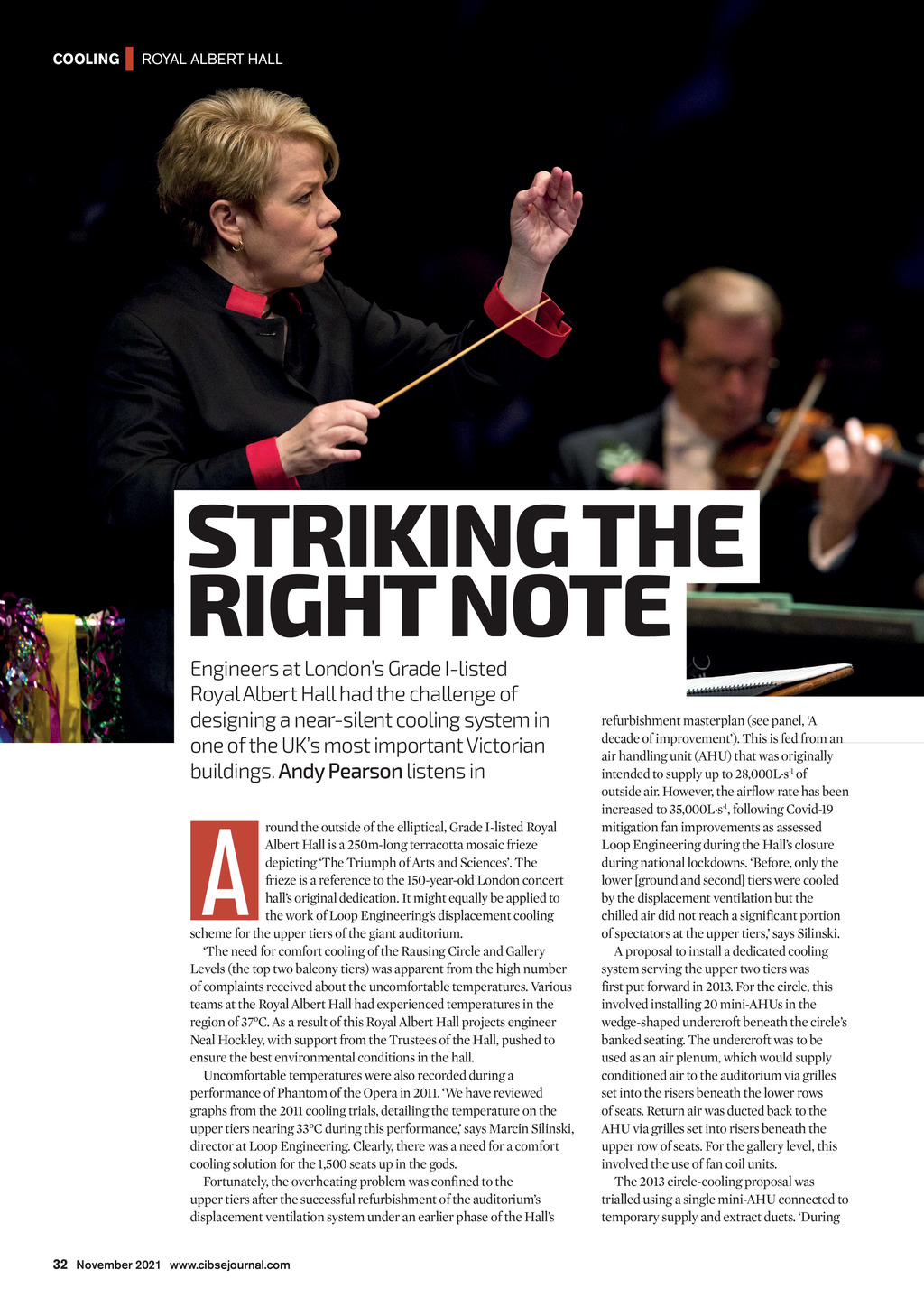




COOLING | ROYAL ALBERT HALL STRIKING THE RIGHT NOTE Engineers at Londons Grade I-listed Royal Albert Hall had the challenge of designing a near-silent cooling system in one of the UKs most important Victorian buildings. Andy Pearson listens in A round the outside of the elliptical, Grade I-listed Royal Albert Hall is a 250m-long terracotta mosaic frieze depicting The Triumph of Arts and Sciences. The frieze is a reference to the 150-year-old London concert halls original dedication. It might equally be applied to the work of Loop Engineerings displacement cooling scheme for the upper tiers of the giant auditorium. The need for comfort cooling of the Rausing Circle and Gallery Levels (the top two balcony tiers) was apparent from the high number of complaints received about the uncomfortable temperatures. Various teams at the Royal Albert Hall had experienced temperatures in the region of 37C. As a result of this Royal Albert Hall projects engineer Neal Hockley, with support from the Trustees of the Hall, pushed to ensure the best environmental conditions in the hall. Uncomfortable temperatures were also recorded during a performance of Phantom of the Opera in 2011. We have reviewed graphs from the 2011 cooling trials, detailing the temperature on the upper tiers nearing 33C during this performance, says Marcin Silinski, director at Loop Engineering. Clearly, there was a need for a comfort cooling solution for the 1,500 seats up in the gods. Fortunately, the overheating problem was confined to the upper tiers after the successful refurbishment of the auditoriums displacement ventilation system under an earlier phase of the Halls refurbishment masterplan (see panel, A decade of improvement). This is fed from an air handling unit (AHU) that was originally intended to supply up to 28,000L.s-1 of outside air. However, the airflow rate has been increased to 35,000L.s-1, following Covid-19 mitigation fan improvements as assessed Loop Engineering during the Halls closure during national lockdowns. Before, only the lower [ground and second] tiers were cooled by the displacement ventilation but the chilled air did not reach a significant portion of spectators at the upper tiers, says Silinski. A proposal to install a dedicated cooling system serving the upper two tiers was first put forward in 2013. For the circle, this involved installing 20 mini-AHUs in the wedge-shaped undercroft beneath the circles banked seating. The undercroft was to be used as an air plenum, which would supply conditioned air to the auditorium via grilles set into the risers beneath the lower rows of seats. Return air was ducted back to the AHU via grilles set into risers beneath the upper row of seats. For the gallery level, this involved the use of fan coil units. The 2013 circle-cooling proposal was trialled using a single mini-AHU connected to temporary supply and extract ducts. During 32 November 2021 www.cibsejournal.com CIBSE Nov21 pp32-34, 36 Royal Albert Hall.indd 32 22/10/2021 15:30